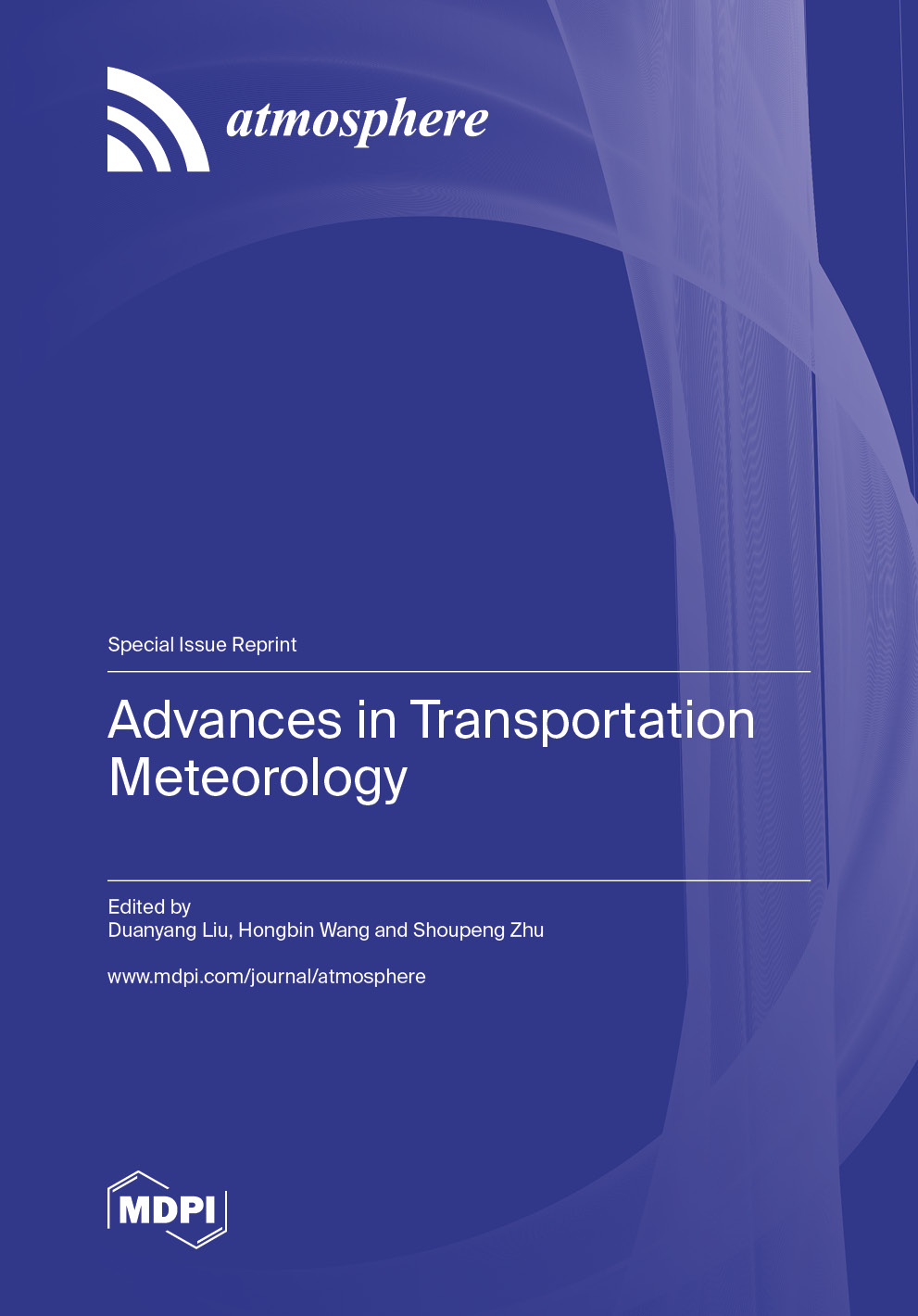Advances in Transportation Meteorology
A special issue of Atmosphere (ISSN 2073-4433). This special issue belongs to the section "Meteorology".
Deadline for manuscript submissions: closed (16 July 2023) | Viewed by 27865
Special Issue Editors
Interests: transportation meteorology; low visibility; transportation meteorological observation; transportation meteorology service; fog
Special Issues, Collections and Topics in MDPI journals
Interests: fog; remote sensing; transportation interruption and weather; transportation meteorological observation
Special Issues, Collections and Topics in MDPI journals
Interests: transportation meteorology; meteorological extremes; numerical model forecast; model output application; statistical postprocessing; transportation meteorological forecast method; Meteorology and transportation economics
Special Issues, Collections and Topics in MDPI journals
Special Issue Information
Dear Colleagues,
Transportation is one of the most crucial fundamentals throughout the world, supporting the daily life of human beings and sustainable development of the whole society. Generally, meteorology emerges various impacts on the transportation operation, safety and efficiency. In the context of global warming, increasing numbers of weather and climate extremes (such as fog, icy roads, and extreme winds) have been detected worldwide and are expected to occur more frequently in the future. Meanwhile, extreme events such as dense fog, rainstorm and blizzard tend to damage the transportation and the traffic facilities (such as express way, port, airport, and high speed railway) and to induce serious traffic blocks and accidents.
In recent decades, concentrated and continuous efforts have been made on meteorological analyses for transportations including the urban traffic, highway, shipping, aviation, etc. Plenty of methods and techniques have been extensively developed to promote the qualities of both observations and forecasts. More recently, state-of-the-art machine learning frameworks have also been widely introduced into studies regarding the transportation meteorology and many other fields.
The current Special Issue seeks original reviews and papers encompassing all aspects, from observations, forecast method, formation mechanism to influence analysis of transportation meteorology and linked extreme events, which aims to span the well-established but rapidly growing field of transportation meteorology and to prevent and reduce the associated hazards more sufficiently.
For all the papers submitted to this Special Issue, an Editorial Board member from Atmosphere who do not have conflict of interest with Nanjing Joint Institute for Atmospheric Sciences will be invited to make decisions to avoid any conflict of interest.
Prof. Dr. Duanyang Liu
Dr. Hongbin Wang
Dr. Shoupeng Zhu
Guest Editors
Manuscript Submission Information
Manuscripts should be submitted online at www.mdpi.com by registering and logging in to this website. Once you are registered, click here to go to the submission form. Manuscripts can be submitted until the deadline. All submissions that pass pre-check are peer-reviewed. Accepted papers will be published continuously in the journal (as soon as accepted) and will be listed together on the special issue website. Research articles, review articles as well as short communications are invited. For planned papers, a title and short abstract (about 100 words) can be sent to the Editorial Office for announcement on this website.
Submitted manuscripts should not have been published previously, nor be under consideration for publication elsewhere (except conference proceedings papers). All manuscripts are thoroughly refereed through a single-blind peer-review process. A guide for authors and other relevant information for submission of manuscripts is available on the Instructions for Authors page. Atmosphere is an international peer-reviewed open access monthly journal published by MDPI.
Please visit the Instructions for Authors page before submitting a manuscript. The Article Processing Charge (APC) for publication in this open access journal is 2400 CHF (Swiss Francs). Submitted papers should be well formatted and use good English. Authors may use MDPI's English editing service prior to publication or during author revisions.
Keywords
- transportation meteorology
- maritime meteorology
- aviation meteorology
- transportation safety
- high impact weather on transportation
- transportation meteorology service
- transportation meteorological observation method
- transportation meteorological forecast method
- meteorology and transportation economics
- transportation meteorological disaster
- road surface temperature
- low visibility
- wind shear
- fog








